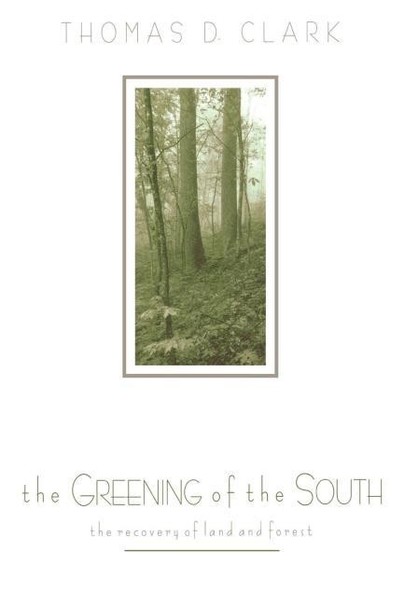The Greening of the South (Paperback)
The Recovery of Land and Forest
Imprint: University Press of Kentucky
Pages: 208
Illustrations: photos
ISBN: 9780813190822
Published: 12th March 2004
Script Academic & Professional
Pages: 208
Illustrations: photos
ISBN: 9780813190822
Published: 12th March 2004
Script Academic & Professional
This book will be reprinted and your order will be released in due course.
You'll be £18.00 closer to your next £10.00 credit when you purchase The Greening of the South. What's this?
+£4.99 UK Delivery or free UK delivery if order is over £40
(click here for international delivery rates)
Need a currency converter? Check XE.com for live rates
(click here for international delivery rates)
Need a currency converter? Check XE.com for live rates
In the early 1920s, in many a sawmill town across the South, the last quitting-time whistle signaled the cutting of the last log of a company's timber holdings and the end of an era in southern lumbering. It marked the end as well of the great primeval forest that covered most of the South when Europeans first invaded it.
Much of the first forest, despite the labors of pioneer loggers, remained intact after the Civil War. But after the restrictions of the Southern Homestead Act were removed in 1876, lumbermen and speculators rushed in to acquire millions of acres of virgin woodland for minimal outlays. The frantic harvest of the South's first forest began; it was not to end until thousands of square miles lay denuded and desolate, their fragile soils -- like those of the abandoned cotton lands -- exposed to rapid destruction by the elements. With the end of the sawmill era and the collapse of the southern farm economy, the emigration routes from the South to the industrial cities of the North and Midwest were thronged with people forced from the land.
Yet in the first quarter of this century, even as the destruction of forest and land continued, a day of renewal was dawning. The rise of the conservation movement, the beginnings of the national forests, the development of scientific forestry and establishment of forest schools, the advance of chemical research into the use of wood pulp -- all converged even as the 1930s brought to the South the sweeping reclamation programs of the Civilian Conservation Corps and the Tennessee Valley Authority; in their wake came a new generation of wood-using industries concerned not so much with the immediate exploitation of timber as with the maintenance of a renewable resource.
In The Greening of the South, this dramatic story is told by one of the participants in the renewal of the forest. Thomas D. Clark, author of many books about southern history, is also an active timber producer on lands in both Kentucky and South Carolina
Other titles in University Press of Kentucky...















